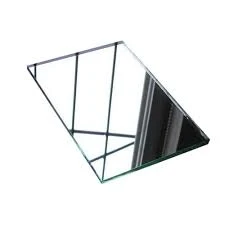

The Advantages and Applications of Low-E 240 Glass
Low-E 240 glass, a type of low-emissivity glass, has gained significant popularity in modern architecture and construction due to its superior energy efficiency and light management properties. This innovative glazing solution is designed to minimize the amount of infrared and ultraviolet light that can pass through it without compromising the amount of visible light transmitted, thus addressing both aesthetic and functional needs in building design.
What is Low-E Glass?
Low-E glass is coated with a thin metallic layer that reflects heat back to its source. This essentially means that during winter, the glass reflects internal heat back into the building, helping to maintain a comfortable temperature and reduce heating costs. Conversely, during the warmer months, this glass helps to block the heat from entering the building, thereby decreasing the need for air conditioning. The 240 in Low-E 240 refers to the specific wavelength of infrared radiation that the glass effectively reflects, making it particularly efficient for controlling solar heat gain.
Energy Efficiency Benefits
One of the primary advantages of Low-E 240 glass is its contribution to energy efficiency. Buildings equipped with this type of glazing can achieve significant reductions in energy consumption. According to studies, using Low-E glass can reduce heating and cooling costs by as much as 30% to 50% compared to traditional glazing options. This efficiency not only translates to lower utility bills for homeowners and businesses but also contributes to a reduced carbon footprint, appealing to environmentally conscious consumers and builders alike.
Enhanced Comfort
In addition to energy savings, Low-E 240 glass enhances interior comfort by minimizing temperature fluctuations near windows. Traditional glass allows for heat loss in the winter and heat gain in the summer, making spaces uncomfortable. With Low-E 240, occupants experience a more stable indoor climate, which can be particularly beneficial in scenarios such as homes with large windows or in regions with extreme weather conditions.
UV Protection

Another significant advantage of Low-E 240 glass is its ability to block harmful ultraviolet (UV) radiation. UV rays can cause fading of furniture, flooring, and artwork, resulting in costly replacements and lower property values over time. By using Low-E 240 glass, building owners can protect their interior furnishings from UV damage while still enjoying ample natural light.
Aesthetic Flexibility
While the functional benefits of Low-E 240 glass are clear, it also offers aesthetic flexibility. Available in various styles, tints, and thicknesses, it can be integrated seamlessly into various architectural designs, from contemporary façades to traditional homes. Architects and designers appreciate the ability to use Low-E glass to create beautiful, light-filled spaces without sacrificing energy performance.
Applications in Modern Architecture
Low-E 240 glass is particularly well-suited for a range of applications in modern architecture. It is commonly used in residential buildings, commercial skyscrapers, educational institutions, and healthcare facilities where energy efficiency, comfort, and aesthetics are critical considerations. The glass not only contributes to LEED certification for sustainable building practices but also enhances overall property value.
Future Trends
As the demand for sustainable building materials continues to rise, Low-E 240 glass is expected to play an increasingly vital role in the construction industry. Innovations in glazing technology, including advancements in glass coatings and frame designs, will further improve the performance and applications of Low-E glass, making it a standard choice for new developments.
Conclusion
In conclusion, Low-E 240 glass stands out as a remarkable solution in modern construction, offering energy efficiency, comfort, and aesthetic appeal. Its ability to balance the need for natural light with energy conservation makes it a favorite among homeowners, architects, and builders. As sustainability becomes paramount in design and construction, Low-E 240 glass will undoubtedly remain an essential component of environmentally responsible building practices.